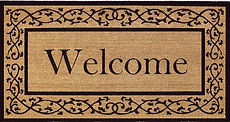®
®
®
®
®

Book of Change
®

Essays

Welcome! Let me start by telling you that I will be talking to you in terms you understand. What a concept! I have sat through lots of university seminars and consultant webinars where the speakers are talking in terms that really make no sense. That’s because they are trying to convince you that they are smarter than you! I won’t do that.I use the principles developed under Washington state’s Governor Christine Gregoire called “Plain Talk.” It was an amazing initiative that required all government documents, pamphlets, and web information to be written for the average reader and organized to serve the reader’s needs. The point was not to dumb down the message. The point was to make the message understood. Let me give you some examples. In one webinar, the consultant quotes the well-known author, Stephen Covey, as saying “Priority is a function of context.” And then he quotes some obscure person named Eugène Ionesco, who is “one of the foremost figures of the French Avant-garde theatre,” as saying “It is not the answer that enlightens, but the question.” My doctorate studies are in organizational psychology and we have an academic phrase for such consultants! They are "carnival barkers!" These pitchmen (and women) overstate, obfuscate, and fabricate their products in order to close the sale. They are the "Mad Men" of change management.
The leading training companies in this field are charging thousands for their certifications! And let’s be honest, you will be paying for some over that top words of wisdom that are meaningless. Managing change is hard enough without insulting people’s intelligence. The very first principle of People Sustained Organizational Change Management (PSOCM ) is to engage the individual employee and get them to buy into the need for change. Believe me, they already know there is a problem. But if you start quoting Eugène Ionesco, then your problems will only get worse.
According to the Harvard Business Review, “A recent search on Amazon.com for books on 'change management' turned up 6,153 titles, each with a distinct take on the topic.” The Book of Change was created with the mission of providing the organizational change manager with a one-stop shopping website where information can be found quickly and easily. It also provides the first academic literature search of the most prominent OCM models.
This in turn has resulted in the first comprehensive, life-cycle model that involves three phases, ten steps, and numerous independent actions the change manager can incorporate into their own OCM activities.
The author of this publication and model brings 30 years of experience as a practitioner-manager and 10 years as an academic-consultant to what is his own ongoing research mission.
Organizational change begins with the action of the individual and is sustained by the collective actions of a group of people. In the process of writing this book, I have called on the voices of individuals who understand change. Sir Isaac Newton, a key figure in the Scientific Revolution, attained his vision, by standing on the shoulders of giants. So shall we. It is fitting that we start our journey by quoting the first individual to have ever written about change – or anything else for that matter. The Sumerian priestess Enheduanna wrote the first known words in the literature (23rd Century, B.C.) and said, What I have done no one has done before. So it is with you and the change you are about to create.
Managing change could be you helping your small workgroup change from one software program to another new and theoretically improved one. Or it could be a massive organizational change like the one that occurred in 1993 when the Clinton-Gore administration created the National Performance Review program to fundamentally reform the way the American federal government works. The Book of Change also includes my own contribution to the change management process. The development of the People Sustained Organizational Change Management (PSOCM) model is the culmination of 40 years of combined experience and education. This includes both private-sector consulting work and public-sector work as a practitioner. The private-sector consulting work consists of doing organizational audits with the goal of creating performance efficiencies and cost-effectiveness (as prescribed by the federal General Accounting Administration’s “Yellow Book”) in several Western states. The public-sector work was as a senior manager with the city, county, regional, and state government agencies in the Pacific Northwest. The doctoral studies were interdisciplinary doctoral studies in sociology, psychology, and business administration at Washington State University.
I believe the PSOCM model is the most comprehensive, life-cycle model available to the practitioner today. It is designed to address both the short-term need to resolve an existential change management threat and the long-term need to institutionalize change management thinking as an organizational and cultural mandate. The snowball effect of change management begins and is sustained by a group of people acting in unison. My own change management thinking has been improved by correspondence with some of the leading thinkers and writers on change management. These include Nassim Nicholas Taleb, the author of The Black Swan: The Impact of the Highly Improbable, and other books on the topic of existential threats and how to anticipate and mitigate them. I have also corresponded with academics such as David Carnevale, author of Organizational Development in the Public Sector and Thomas Cummings, coauthor of the foundational classic Organization Development and Change.
Book of Change Mission Statement: To provide organizations with a comprehensive, systematic and sustainable change management process with commensurate tools by which people within an organization can manage desired change outcomes such as improving performance efficiency, cost-effectiveness, corporate culture, communication and/or employee interaction.